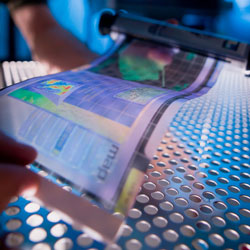
Advanced surface haptics on flexible AMOLED displays, Tanvas, Inc. Cooperate with one of the world's leading display suppliers. TanvasTouch's tactile surface with flexible AMOLED screen is ideal for a wide range of applications, including automotive, home automation and other commercial displays, including laptops, tablets and other mobile devices. While the flexible touch screen with tactile textures and tactile effects blends opens up creative applications and responsive surfaces in any shape, size or configuration.
While traditional vibration-based haptics require actuators to move mass, this solution is a solid state answer that can deliver different tactile effects simultaneously in multiple areas on the same surface. Because it is a surface haptic technology, proprietary haptic technology is used to promote the feeling of tactile textures and effects as the finger slides across the screen surface. It also provides an easy-to-program sense of touch that is consistent regardless of the shape or size of the display.
Kevin Klein, vice president of Marketing at Tanvas, said: "AMOLED displays are extremely thin, light and flexible for bending and folding, making them particularly suited to TanvasTouch's surface haptic technology." "The absence of mechanical motors, complex tuning and moving parts makes this technology ideal for adding tactile effects to these multifunctional displays."
Displays are moving toward larger, more curved and flexible shapes that traditional haptic technologies are complex, expensive or even impossible to implement. Traditional vibration-based haptic technology requires a controlled way to vibrate the screen, making it more demanding for flexible surfaces. The TanvasTouch uses a surface panel similar to current touch screens, but it's specifically designed to convey a surface feel.
The company has already completed several working demonstrations showing commercial uses for the technology.